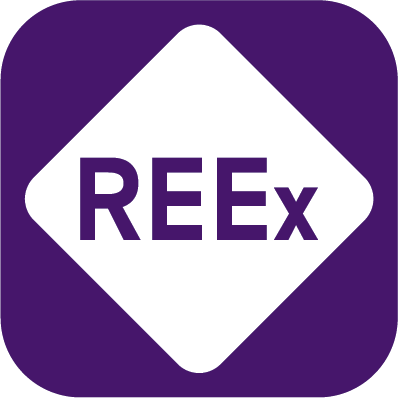lesterragland
About lesterragland
A Comprehensive Study On Private Airplane Flights
Introduction
Private airplane flights have grow to be an more and more fashionable mode of transportation for individuals and companies in search of efficiency, comfort, and privacy. This report delves into the varied features of private aviation, including its history, forms of aircraft, operational dynamics, prices, regulatory framework, and future tendencies. By understanding these elements, stakeholders could make knowledgeable choices relating to using private flights.
Historical past of Private Aviation
The concept of private aviation dates back to the early 20th century, shortly after the Wright brothers’ first powered flight in 1903. The first private aircraft had been primarily utilized by wealthy individuals and businesses, typically for leisure or enterprise journey. Over the a long time, developments in know-how and the expansion of the aviation industry led to the event of more subtle and efficient aircraft. The introduction of jet engines in the 1950s revolutionized private flying, making it faster and more accessible.
Varieties of Private Aircraft
Private aviation encompasses a variety of aircraft varieties, every tailored to satisfy particular wants. The primary categories include:
- Light Jets: These small jets are perfect for short to medium-haul flights, accommodating 4 to eight passengers. If you have any issues relating to where by and how to use privatejetscharter.review, you can get hold of us at our own internet site. Examples include the Cessna Quotation Mustang and the Embraer Phenom 100.
- Midsize Jets: Offering more space and vary, midsize jets can carry 6 to 9 passengers and are suitable for longer flights. Widespread fashions embody the Hawker 800 and the Quotation XLS.
- Heavy Jets: Designed for long-haul flights, heavy jets can accommodate 10 or extra passengers and are equipped with luxurious amenities. The Gulfstream G550 and Bombardier Global 6000 are notable examples.
- Turboprop Aircraft: These planes use a turbine engine to drive a propeller and are sometimes employed for shorter regional flights. The Beechcraft King Air and the Pilatus Pc-12 are generally used turboprops.
- Helicopters: For brief distances and urban journey, helicopters present a versatile alternative. They can land in confined spaces and are sometimes used for executive transport, medical emergencies, or tourism.
Operational Dynamics
Private flights function beneath a different set of rules compared to industrial airlines. Key operational dynamics embrace:

- Flight Planning: Private flights require meticulous flight planning, which incorporates route choice, weather considerations, and fuel administration. Pilots often use specialized software to optimize flight paths.
- Scheduling Flexibility: Certainly one of the first advantages of private aviation is the flexibility to schedule flights in keeping with the passenger’s convenience. This flexibility permits for last-minute adjustments and quick turnarounds.
- FBO Providers: Fixed Base Operators (FBOs) present important services at airports, together with fueling, upkeep, and passenger amenities. FBOs play a crucial role in guaranteeing a seamless experience for private flyers.
- Crew Requirements: Relying on the kind of aircraft and the space of the flight, private flights may require a pilot and co-pilot, together with cabin crew for larger jets. Crew members should adhere to strict training and licensing rules.
Price Evaluation
The price of private flying can fluctuate significantly primarily based on a number of components, together with aircraft type, flight duration, and extra services. Key price parts include:

- Acquisition Prices: Purchasing a private aircraft involves a considerable preliminary funding, starting from a whole bunch of hundreds to millions of dollars, relying on the aircraft sort.
- Operating Costs: These include gasoline, maintenance, insurance coverage, and crew salaries. Operating costs can range from $1,200 to $3,000 per flight hour, relying on the aircraft.
- Charter Prices: For those who don’t want to purchase an aircraft, chartering gives a cost-effective different. Charter costs can range from $1,500 to $15,000 per flight hour, relying on the aircraft and distance.
- Membership Applications: Several companies supply membership programs that permit individuals to entry private flights at a reduced fee. These applications typically involve an upfront price and annual dues.
Regulatory Framework
Private aviation is topic to a posh regulatory framework that varies by country. Within the United States, the Federal Aviation Administration (FAA) oversees private aviation, imposing security requirements and operational regulations. Key rules embody:
- Part 91: This section of the FAA laws governs general aviation operations, together with private flights. It outlines necessities for pilot certifications, aircraft upkeep, and operational procedures.
- Half 135: This regulation applies to charter operations and requires stricter safety and operational requirements in comparison with Part 91.
- International Regulations: Private aviation can also be regulated by international bodies, such as the International Civil Aviation Organization (ICAO), which sets global requirements for aviation security and efficiency.
Future Traits
The private aviation industry is evolving rapidly, pushed by technological developments and changing client preferences. Key traits embrace:
- Sustainability Initiatives: As environmental considerations rise, the business is exploring sustainable aviation fuels (SAFs) and electric aircraft to reduce carbon emissions.
- Digital Transformation: Using expertise in flight planning, booking, and customer service is becoming increasingly prevalent. Apps and platforms that streamline the private flying expertise are gaining popularity.
- Elevated Accessibility: The rise of fractional ownership and jet card packages is making private flying extra accessible to a broader audience, allowing more individuals to experience the benefits of private aviation.
- Health and Security: The COVID-19 pandemic has heightened consciousness of well being and security in journey. Private aviation presents a controlled environment, minimizing publicity to well being risks in comparison with business flying.
Conclusion
Private airplane flights characterize a unique and evolving sector of the aviation business. With its rich history, various aircraft options, and operational flexibility, private aviation caters to the wants of discerning travelers. As the trade adapts to regulatory adjustments and embraces technological developments, it is poised for continued development and innovation. Stakeholders should stay knowledgeable about trends and developments to maximize the advantages of private aviation while addressing the challenges it faces.
No listing found.
